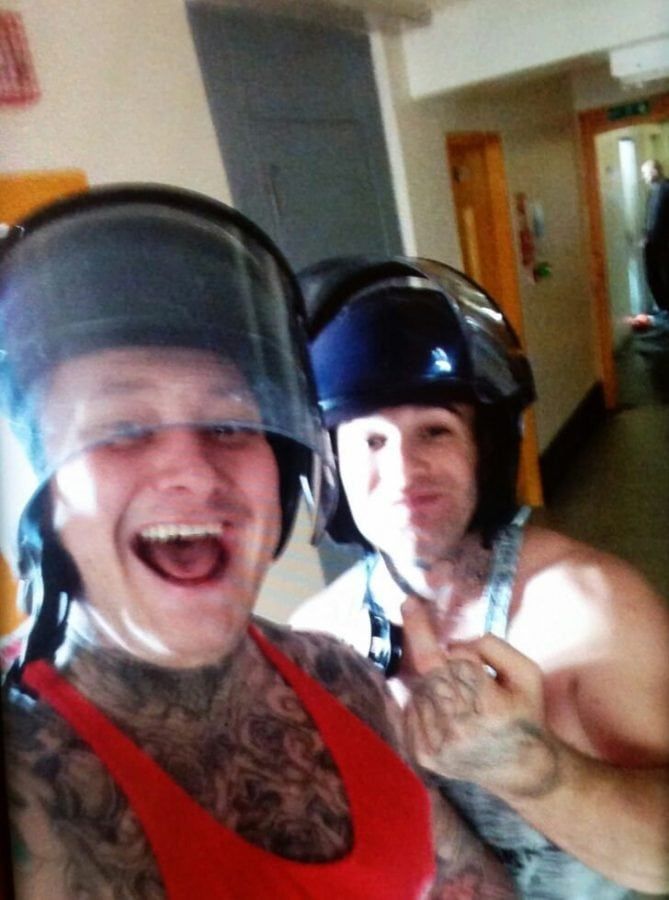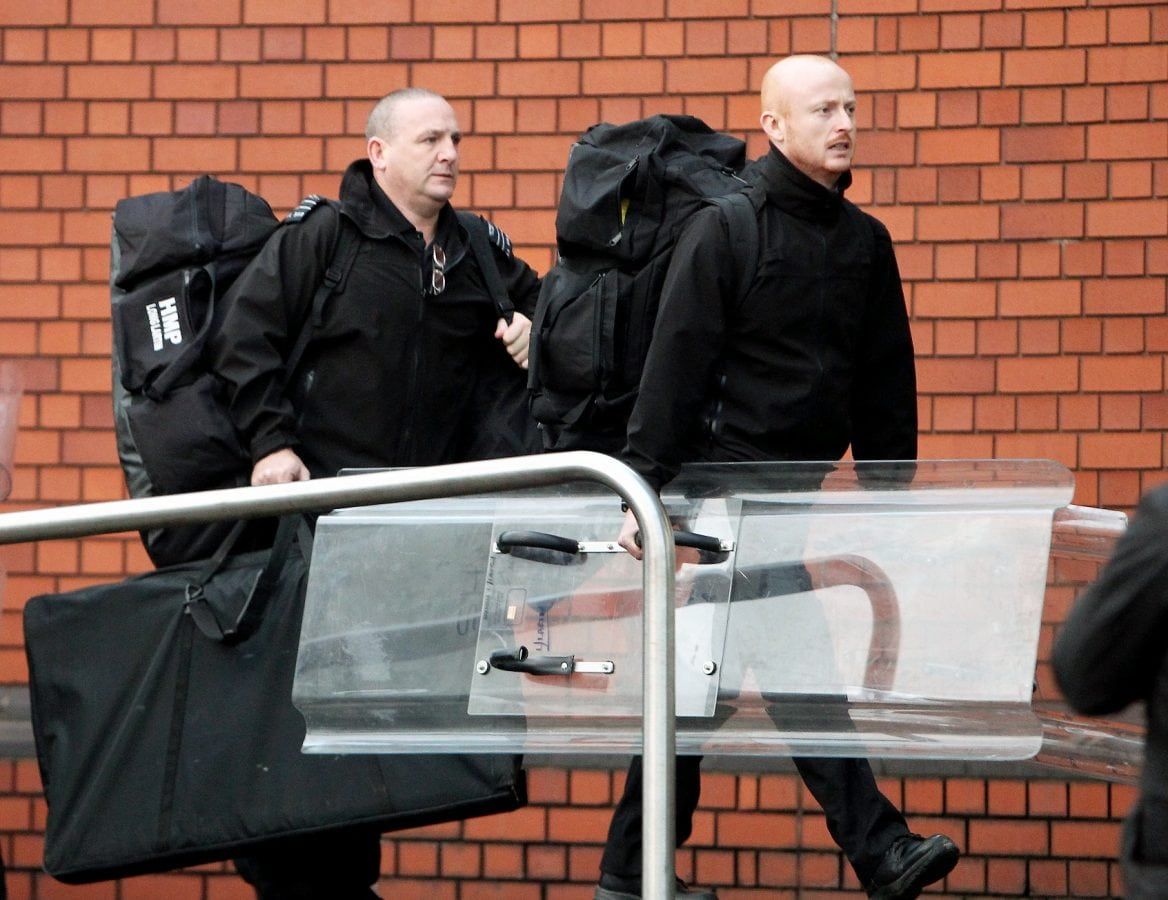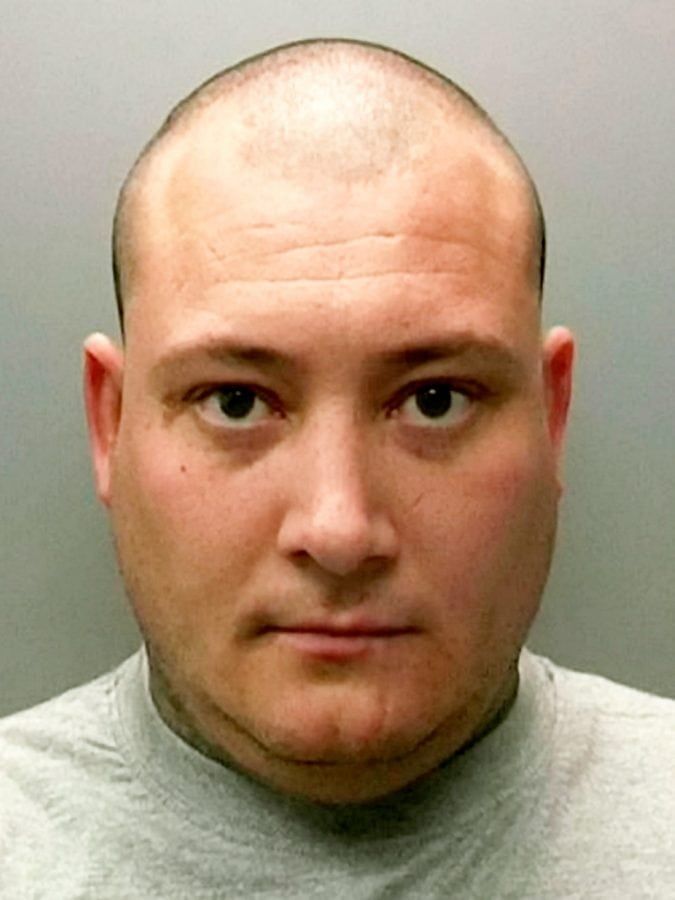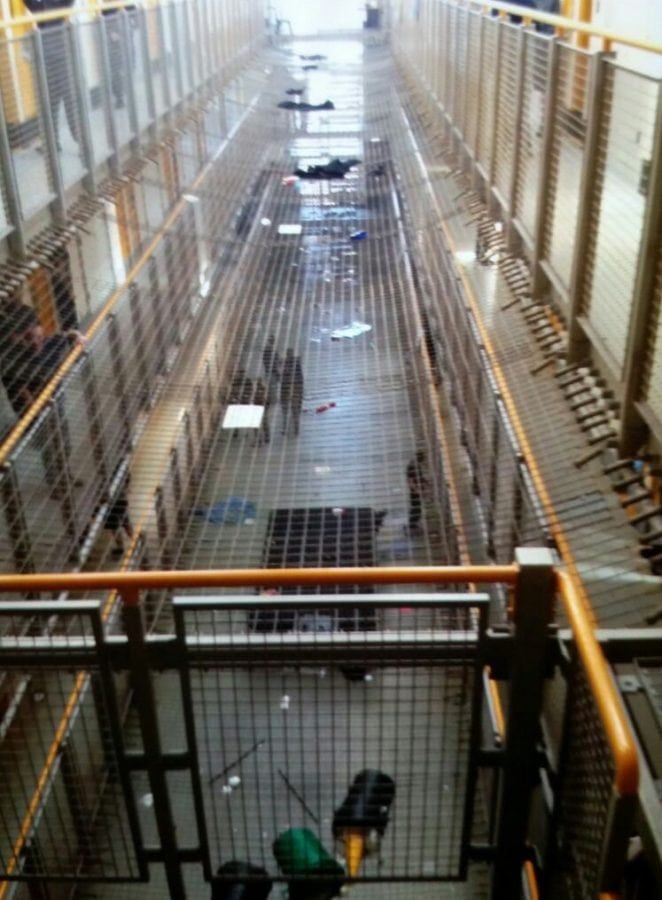Dangerous criminals stole jail cell keys from guards in order to free more than 500 lags as they went on the rampage during a 15 HOUR prison riot, a court heard.
Senior prison officers “lost control” of a large part of HMP Birmingham after violence erupted at the Category B jail on December 16 last year.
Jurors were told how wardens were forced to evacuate after being pelted with pool balls, cans of paint and sprayed with water from fire hoses.
Prison officers had to chain up and double lock gates after a number of crooks gained access to keys, which could have got them outside, and started opening cell doors.
A court heard how laughing prisoners then posed for selfies taken wearing riot gear and helmets, which were later uploaded to social media.

After running amok for 15 hours, control was finally regained at around 10pm when specially trained “Tornado teams” assisted prison staff at the G4S-run jail.
The trial of four men accused of being involved in the large-scale riot started at Birmingham Crown Court on Monday (11/9).
Carl Brookes, 33, Ross Queen, 30, John Burton, 39, and Luke Mansell, 24 are charged with prison mutiny intended to further a common purpose of overthrowing lawful authority.
Brookes and Queen are also charged with failing to submit to lawful authority whilst the prison mutiny was taking place.

Opening the case, Prosecutor Simon Davis said: “The events started early that morning soon after the doors to a number of cells were opened by prison officers.
“In a nutshell, soon after those cell doors opened, there followed upwards of 15 hours of disorder within the prison.
“A number of prisoners climbed on to the suicide netting on one of the prison wings, keys to key doors and gates were stolen from a prison officer, giving effective access to a number of areas.
“The cells of maybe upwards of 500 prisoners were opened by prisoners.
“Prison officers were forced to evacuate areas of the prison.
“They lost control of a large part of the prison due to the violence and disorder which was happening.
“Prisoners were requested to return to their cells and to desist from the violence and disorder but failed to do so.
“You will see video evidence of them being told to ‘pack it in’ and damage being caused to part of the prison wing.
“Large parts of the prison were subjected to criminal damage which included, at its lowest point, graffiti, throwing of paint up walls and over fences and at officers, looting of offices used by prison officers, damage to windows, doors, computer equipment, furniture and a number of areas were set on fire.

“It was necessary for the prison officers to hold key entrances and exits in order to prevent the advance of prisoners, doing this by initially double locking areas and putting chains around gates to prevent the prisoners with the keys getting through.
“While holding one particular gate, N1, prisoners pelted officers with pool balls, paint and water.
“Events within the prison reached the pages of the newspapers and on social media – pictures of prisoners in riot gear, riot-style helmets and holding shields, were posted and published.
“The message going out online was ‘we are in control’ and we will see those pictures as they featured online.
“It was necessary for the prison to summon the assistance of specially trained squads of officers known as Tornado teams to take back control of the prison – they were called in at last minute notice.
“Effective control of the prison was resumed just after 10pm on December 16 2016.
“This is what this case is all about in a nutshell – a prison mutiny.”

Mr Davis said prison mutiny involves two or more prisoners “engaging in conduct intended to further a common purpose of overthrowing lawful authority in that prison”.
He told the jury four other prisoners had already pleaded guilty to their part in the disorder.
He added: “There was a prison mutiny, you can take that as read.
“As you will imagine, an incident lasting 15 or 16 hours will generate a substantial amount of evidence.”
Mr Davis told the jury the disorder took place in two L-shaped blocks at the prison, each consisting of two wings.
He added: “Different officers, depending on their rank will have more or fewer keys to use around the prison.
“It was of some considerable concern in this case that keys were stolen from a senior officer who had access to a number of different areas to the prison, including doors to the outside.”
Prison mutiny, which is contrary to Section 1 of the Prison Security Act 1992, carries a maximum ten-year jail sentence.
The disorder was described as the most serious riot in a category B prison since the 25-day rebellion by lags who took over Strangeways jail in Manchester in 1990.
The trial, which is expected to last three weeks, continues.
RELATED
https://www.thelondoneconomic.com/must-reads/teacher-jailed-sending-naked-selfies-schoolgirl-smiley-face-emojis-covering-modesty/31/08/
https://www.thelondoneconomic.com/news/police-chief-loses-vote-no-confidence-suggesting-gun-toting-civilians-tackle-terrorists/04/07/

